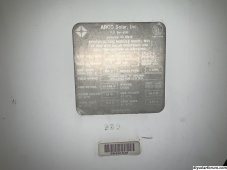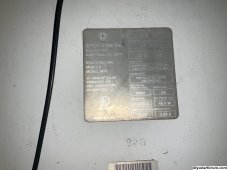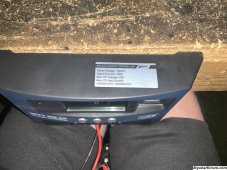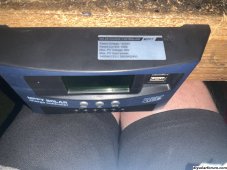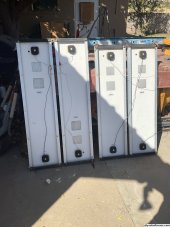Hello I’m hoping somebody can educate me. I have 4 48 watt panels, I hooked 2 sets in series then connected those in parallel, running to my control module, then to my battery. I have Brand new! 1000 watt de Walt inverter. Everything was looking good until I switched power onto my inverter, and it fried the capacitors. Is this because I double the voltage by running them in the series 1st?
You are using an out of date browser. It may not display this or other websites correctly.
You should upgrade or use an alternative browser.
You should upgrade or use an alternative browser.
Fried inverter
- Thread starter KuDeGra
- Start date
Hedges
I See Electromagnetic Fields!
- Joined
- Mar 28, 2020
- Messages
- 20,702
We need the full specs, such as PV panel Voc, Vmp, Isc, Imp. SCC MPPT max input voltage.
Usually the SCC MPPT would be killed by excessive voltage. Don't expect separate inverter to be damaged.
"12.8V inverter"
Are you using 12V battery? or configured for 24V?
Typically SCC will auto-sense battery and charge it accordingly.
Do you have a voltmeter to check things?
Photo would be good. Maybe a schematic.
Usually the SCC MPPT would be killed by excessive voltage. Don't expect separate inverter to be damaged.
"12.8V inverter"
Are you using 12V battery? or configured for 24V?
Typically SCC will auto-sense battery and charge it accordingly.
Do you have a voltmeter to check things?
Photo would be good. Maybe a schematic.
I am literally so new I have no idea what all those terms are. These are the two panels I have and I have two of each. everything seem to be going fine until I power it on the inverter and it toasted. Using lead acid battery from my car, just a test of the system. maybe that was my problem?
Attachments
42OhmsPA
What's in a title?
SCC = solar charge controller I'm guessing your mppt sent 24v to the inverter, letting the magic smoke out.
I hope you didn't damage the batteries too. Wait I guess the batteries could be wired in series too... I need to get some sleep.
Post some pics of your wiring check voltages with a meter.
@Hedges is an expert, he'll help you out and at times make your head spin in the process.
I hope you didn't damage the batteries too. Wait I guess the batteries could be wired in series too... I need to get some sleep.
Post some pics of your wiring check voltages with a meter.
@Hedges is an expert, he'll help you out and at times make your head spin in the process.
Hedges
I See Electromagnetic Fields!
- Joined
- Mar 28, 2020
- Messages
- 20,702
Did you steal those panels from a museum?
"Max voltage 24 volts DC" now known as Voc
"Operating voltage at 47C 15.5", compare to Vmp (which is at 25C.)
"Max current 3.51A" now known as Isc
"Oper amps at 47C 3.22A" compare to Imp (at 25C)
The 47C is more like NOCT, normally operating cell temperature.
With two in series, 48V open circuit. Could rise 16% more in freezing weather.
What are specs of the MPPT SCC? Max PV voltage it allows?
Is the battery 12V? Was it connected? Any chance inverter was wired backwards?
"Max voltage 24 volts DC" now known as Voc
"Operating voltage at 47C 15.5", compare to Vmp (which is at 25C.)
"Max current 3.51A" now known as Isc
"Oper amps at 47C 3.22A" compare to Imp (at 25C)
The 47C is more like NOCT, normally operating cell temperature.
With two in series, 48V open circuit. Could rise 16% more in freezing weather.
What are specs of the MPPT SCC? Max PV voltage it allows?
Is the battery 12V? Was it connected? Any chance inverter was wired backwards?
Lol. I know like 30 years old right! I got them off my buddies roof. Volts and amps still really good so I figured what the hell might as well try and run my pool pump off that shit. nothing was wired backwards I double and triple checked. The battery was 12 V. I connected the battery first to SCC and nothing came on so I figured maybe the panels had to be connected first , so I connected the panels first to the scc and then connect to the battery to scc , then the inverter to the battery. As soon as I powered on the inverter it fried.Did you steal those panels from a museum?
"Max voltage 24 volts DC" now known as Voc
"Operating voltage at 47C 15.5", compare to Vmp (which is at 25C.)
"Max current 3.51A" now known as Isc
"Oper amps at 47C 3.22A" compare to Imp (at 25C)
The 47C is more like NOCT, normally operating cell temperature.
With two in series, 48V open circuit. Could rise 16% more in freezing weather.
What are specs of the MPPT SCC? Max PV voltage it allows?
Is the battery 12V? Was it connected? Any chance inverter was wired backwards?
Attachments
Last edited:
Hedges
I See Electromagnetic Fields!
- Joined
- Mar 28, 2020
- Messages
- 20,702
The charge controller is most likely "MPPT" in name only, is a PWM charge controller.
The give-away is it has USB ports, usually seen in those deceptive products.
Max PV voltage 50V. That would be for a 24V battery and this PWM charge controller. That reduces power dissipation in the SCC. But you only have 200W of panels, and it says 1400W for 12V system, so probably not too much power. Possibly too much voltage 48V PV - 12V battery = 36V across transistors. Possibly.
Normally SCC is connected to battery first, so it know what voltage. PV panels second.
If inverter was connected to a 12V battery, I wouldn't expect SCC or PV panels to drive voltage high enough to hurt inverter. At least not for a while. If battery was not in the circuit, then SCC could drive over-voltage into the inverter. SCC can short out, and 48V PV panels put 6.5A into battery, but nothing bad should happen until battery is seriously over-charged.
All four panels in parallel would be better.
With PV, SCC, and battery connected, what voltage do you see on battery then?
Fried capacitors could be over-voltage or reverse voltage.
Power a pool pump? Ain't gonna happen, if you mean an induction motor. Starting current is 5x nameplate operating current. What are motor specs?
Inverter - define the load first.
The give-away is it has USB ports, usually seen in those deceptive products.
Max PV voltage 50V. That would be for a 24V battery and this PWM charge controller. That reduces power dissipation in the SCC. But you only have 200W of panels, and it says 1400W for 12V system, so probably not too much power. Possibly too much voltage 48V PV - 12V battery = 36V across transistors. Possibly.
Normally SCC is connected to battery first, so it know what voltage. PV panels second.
If inverter was connected to a 12V battery, I wouldn't expect SCC or PV panels to drive voltage high enough to hurt inverter. At least not for a while. If battery was not in the circuit, then SCC could drive over-voltage into the inverter. SCC can short out, and 48V PV panels put 6.5A into battery, but nothing bad should happen until battery is seriously over-charged.
All four panels in parallel would be better.
With PV, SCC, and battery connected, what voltage do you see on battery then?
Fried capacitors could be over-voltage or reverse voltage.
Power a pool pump? Ain't gonna happen, if you mean an induction motor. Starting current is 5x nameplate operating current. What are motor specs?
Inverter - define the load first.
The charge controller is most likely "MPPT" in name only, is a PWM charge controller.
The give-away is it has USB ports, usually seen in those deceptive products.
Max PV voltage 50V. That would be for a 24V battery and this PWM charge controller. That reduces power dissipation in the SCC. But you only have 200W of panels, and it says 1400W for 12V system, so probably not too much power. Possibly too much voltage 48V PV - 12V battery = 36V across transistors. Possibly.
Normally SCC is connected to battery first, so it know what voltage. PV panels second.
If inverter was connected to a 12V battery, I wouldn't expect SCC or PV panels to drive voltage high enough to hurt inverter. At least not for a while. If battery was not in the circuit, then SCC could drive over-voltage into the inverter. SCC can short out, and 48V PV panels put 6.5A into battery, but nothing bad should happen until battery is seriously over-charged.
All four panels in parallel would be better.
With PV, SCC, and battery connected, what voltage do you see on battery then?
Fried capacitors could be over-voltage or reverse voltage.
Power a pool pump? Ain't gonna happen, if you mean an induction motor. Starting current is 5x nameplate operating current. What are motor specs?
I wondered if that was a knock off SCC… I did take a reading at the battery after panels, controller and battery connected, and I was reading 13 and change. what you said about too many volts makes sense. I ran two panels in series. And then ran the two sets parallel. and which gave me about 74 V total when I took a multimeter reading. I guess I will go to parallel for all four panels. Do you have a recommendation for an SCC and an inverter for the panels I have?Inverter - define the load
Pool pump is 3.2 A ,which gives us 16 A starting power x 120=1920 watt . So I need a 2000 watt inverter? 24V 200ah battery?
Last edited:
Pool pump is 3.2 A ,which gives us 16 A starting power x 120=1920 watt . So I need a 2000 watt inverter? 24V 200ah battery?
The 1000W DeWalt inverter has 2000W peak, this should be enough to start 350W inductive load.
If it does not start, it may not necessarily be due to inverter overload, but battery could not handle 180A without dipping under 10.5V and inverter detected under-voltage and shut down.
I have 1kW well pump and 2000W/4000W Novopal inverter. With 60Ah lead-acid battery it never starts, with 130Ah battery it sometimes starts and with both in parallel it almost always starts and can continue running even when one of the batteries is disconnected.
Other idea, I have not tested with pump yet though, is soft start module. It is a triac motor control module with automatic speedup over 1-2sec.
Last edited:
Hedges
I See Electromagnetic Fields!
- Joined
- Mar 28, 2020
- Messages
- 20,702
I wondered if that was a knock off SCC… I did take a reading at the battery after panels, controller and battery connected, and I was reading 13 and change. what you said about too many volts makes sense.
13V at the battery is OK, indicates full battery if not charging and less than full if current is coming in from the PV panels and charger.
13V would not damage the inverter.
I ran two panels in series. And then ran the two sets parallel. and which gave me about 74 V total when I took a multimeter reading. I guess I will go to parallel for all four panels.
74V is higher than you should ever see with two panels in series "2s". Same with two of those strings in parallel "2s2p".
24V per panel, should only reach 48V not 74V.
Seems to me you might have actually had all four in series.
Do you have a recommendation for an SCC and an inverter for the panels I have?
Pool pump is 3.2 A ,which gives us 16 A starting power x 120=1920 watt . So I need a 2000 watt inverter? 24V 200ah battery?
3.2A x 120V = 384W
Your panels only total 200W, and that would be under ideal conditions. Would need 2 hours full sun to run pump for one hour. With the sun off angle most of the time, you may get 6 hours effective sun in the summer, 2 hours in the winter.
Cycling battery, 3 hours run time in the summer would be the most you could hope for. Lead-acid battery will wear out with cycling, 1 year for cheap AGM, 2 years for quality AGM, a month for automotive starting battery. And that's assuming you don't over-discharge. Inverter low voltage cut-out probably too low to protect battery.
Would be better to put up about 1000W of panels, half oriented for morning sun and half for evening.
If that SCC can actually meet the specs on label, it might work. PWM should work OK with PV panel operating voltages like the ones you have. Are the SCC terminals big enough for a wire that can carry 100A??
The 1000W DeWalt inverter has 2000W peak, this should be enough to start 350W inductive load.
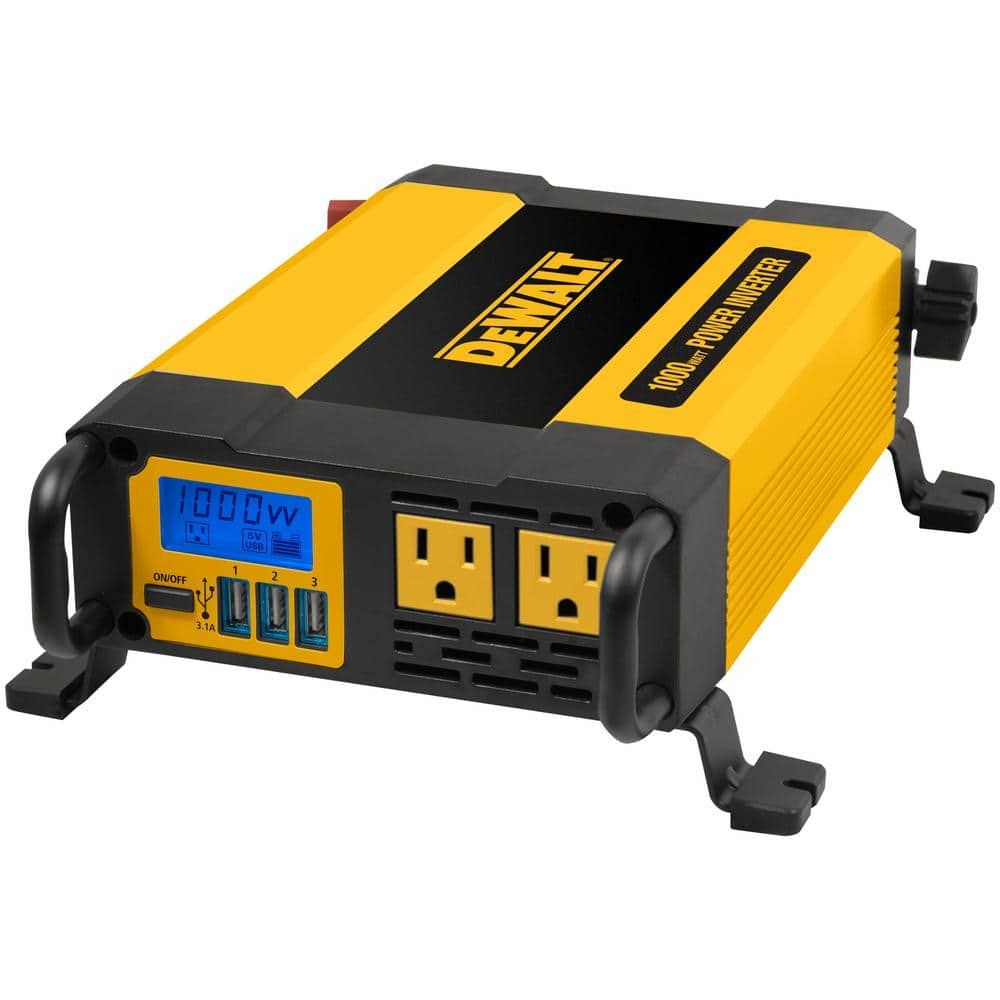
DEWALT 1000-Watt Portable Car Power Inverter with Triple USB Ports DXAEPI1000 - The Home Depot
The DeWalt DXAEPI1000 Professional 1,000 Watt power inverter delivers enough heavy duty power to run tools and portable electronics on the job site or on the go. It's one of the most versatile inverters
www.homedepot.com
"
| Starting Wattage | 2000 |
|---|
But we don't know if that is for 100 milliseconds, or for 3 seconds.
Need whole seconds for it to be able to start.
Other idea, I have not tested with pump yet though, is soft start module. It is a triac motor control module with automatic speedup over 1-2sec.
People report great success with MicroAir Easy Start. But cost is about $350.
Induction motors are difficult to start. Inverter drive and brushless DC are easier.
Can you find a DC pump to install instead, which could run off a 12V or 24V battery?
Oops.you are right. Got my numbers mixed up. That was my series connected volts . So it looks like my 48 watt panels are putting out 34 V in series and my 53w panels are putting out 40 V in series. which then connected in parallel, will run off the lower volts of the four panels, right?
Can I hook up pv cells to control module without battery and test for voltage to determine 12v or 24v coming out of module?
the battery I’m using is not the battery I want to use. I was just trying to get my system to work . if I need to get three batteries to run my pump motor for four hours I will. (I think I just need two200 amp hour) I live in Arizona, where summertime abundance of sun usually gets into the eight hour charging range. Yes, I know there are drop offs, but I took readings and I am sure eight hours of good sun can usually be expected in Arizona where I live. I also realize the amount of panels does not put back into the system a large amount for what I’m trying to run. I suppose my thought was an extra battery would give me an extra stored time for the solar cells to charge the battery
Can I hook up pv cells to control module without battery and test for voltage to determine 12v or 24v coming out of module?
the battery I’m using is not the battery I want to use. I was just trying to get my system to work . if I need to get three batteries to run my pump motor for four hours I will. (I think I just need two200 amp hour) I live in Arizona, where summertime abundance of sun usually gets into the eight hour charging range. Yes, I know there are drop offs, but I took readings and I am sure eight hours of good sun can usually be expected in Arizona where I live. I also realize the amount of panels does not put back into the system a large amount for what I’m trying to run. I suppose my thought was an extra battery would give me an extra stored time for the solar cells to charge the battery
Attachments
Hedges
I See Electromagnetic Fields!
- Joined
- Mar 28, 2020
- Messages
- 20,702
Most SCC say to connect to batteries first, PV panels second.
It probably auto-configures to voltage.
If your battery(s) are wired for 12V, should not have damaged the inverter unless connected backwards.
That is for lead-acid. If lithium, higher surge current into capacitors when first connected can be a problem, so people precharge with resistor or light bulb.
It probably auto-configures to voltage.
If your battery(s) are wired for 12V, should not have damaged the inverter unless connected backwards.
That is for lead-acid. If lithium, higher surge current into capacitors when first connected can be a problem, so people precharge with resistor or light bulb.
Similar threads
- Replies
- 4
- Views
- 409
- Replies
- 10
- Views
- 372
- Replies
- 22
- Views
- 979



